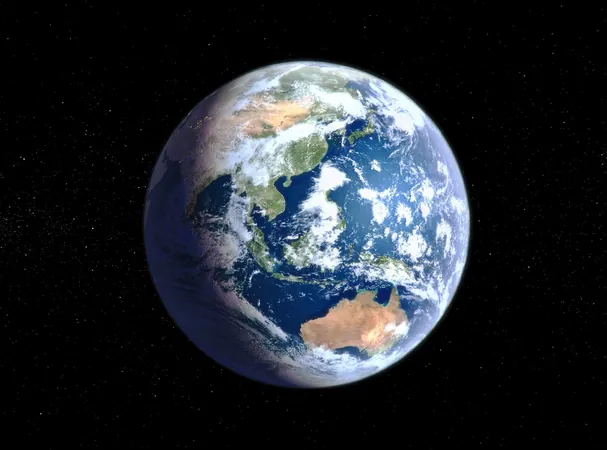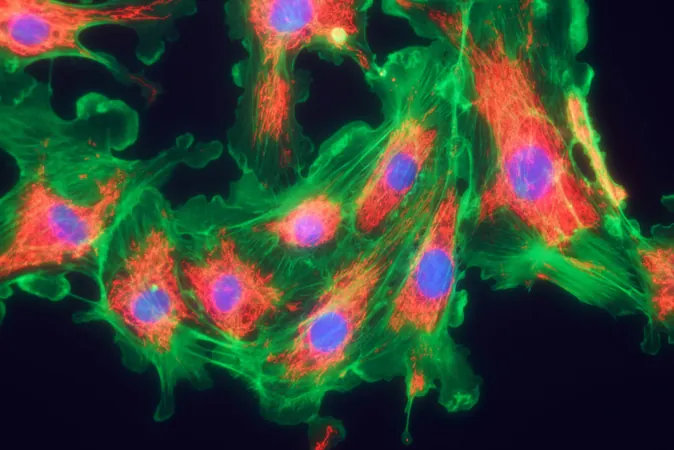
Unraveling Ancient Megadroughts: Earth’s Orbit Holds the Key!
2025-05-11
Author: Arjun
Scientists Unlock Secrets of Ancient Droughts!
Decades of research have unveiled a staggering truth about North America's distant past: prolonged droughts struck the continent thousands of years ago, leading to catastrophic forest die-offs and ecosystem upheaval. Yet, until now, the catalyst behind these ancient dry spells remained a mystery.
The Role of Earth's Orbit in Climate Chaos
A groundbreaking study by an international team reveals that shifts in Earth's orbit have a surprising role in triggering these megadroughts. Focused on the Holocene epoch, the warm period following the last ice age, the researchers traced back climate changes using fossilized pollen grains scattered across North America.
Digging Deep into Climate History
Employing advanced machine-learning algorithms, the researchers mapped moisture fluctuations over the last 11,000 years. The findings were mind-blowing: many regions faced moisture levels significantly lower than what we experience today, with droughts occurring at different times depending on location.
A Timeline of Desolation
Lead author J. Sakari Salonen from the University of Helsinki explains, Drought conditions kicked off in northeastern U.S. and parts of Canada, now among the wetter locales, as far back as 11,000 years ago. Meanwhile, the most severe drought conditions struck the mid-continent’s modern prairies around 7,000 years ago, indicating a westward migration of climatic anomalies.
Understanding the Drivers of Drought
Jack Williams, a professor at the University of Wisconsin-Madison, emphasizes the importance of diagnosing past droughts, noting how misjudgments about water availability can lead to catastrophic consequences, including drastic shifts in fire regimes and tree die-offs.
Climate Simulations Provide Clarity
To uncover these ancient drought triggers, researchers used high-resolution climate simulations that echoed their pollen-based reconstructions. The resulting data pointed to two predominant factors: a persistent high-pressure system over the remnants of the ice sheets diverting moisture flow and rising temperatures that accelerated soil drying.
Echoes of the Past in Today’s Climate
Frederik Schenk, an atmospheric physicist, highlights that while a warmer climate suggests increased precipitation, it may not universally apply. In fact, the warm summers exacerbated evaporation rates, leading to long, parched spells.
The Dangers Ahead: A Cautionary Tale
As history echoes into the present, researchers stress the importance of understanding these ancient megadroughts. The rapid rise in greenhouse gases today creates a scenario reminiscent of the slow orbital shifts that triggered similar events 10,000 years ago.
Despite forecasts of rising precipitation, North America may face a significant drying trend by century's end due to heightened evaporation.
The Milankovitch Cycle: A Climate Game-Changer
The Milankovitch cycles, which dictate Earth’s orbital variations over tens of thousands of years, have played a pivotal role in climatic history. These slow changes helped form massive ice sheets 20,000 years ago, and the melting of these sheets ushered in the warm Holocene, during which Earth experienced temperatures higher than today.
A Stark Warning for the Future
This study illustrates how even faint nudges to Earth’s orbit can spark monumental climate shifts. With human-induced changes now accelerating far beyond natural cycles, the ramifications could be equally severe, unfolding in real time.
The full findings are detailed in the journal Nature Communications, serving as a vital reminder: understanding the climate turmoil of our past is crucial in preparing for the looming challenges of our future.





 Brasil (PT)
Brasil (PT)
 Canada (EN)
Canada (EN)
 Chile (ES)
Chile (ES)
 Česko (CS)
Česko (CS)
 대한민국 (KO)
대한민국 (KO)
 España (ES)
España (ES)
 France (FR)
France (FR)
 Hong Kong (EN)
Hong Kong (EN)
 Italia (IT)
Italia (IT)
 日本 (JA)
日本 (JA)
 Magyarország (HU)
Magyarország (HU)
 Norge (NO)
Norge (NO)
 Polska (PL)
Polska (PL)
 Schweiz (DE)
Schweiz (DE)
 Singapore (EN)
Singapore (EN)
 Sverige (SV)
Sverige (SV)
 Suomi (FI)
Suomi (FI)
 Türkiye (TR)
Türkiye (TR)
 الإمارات العربية المتحدة (AR)
الإمارات العربية المتحدة (AR)